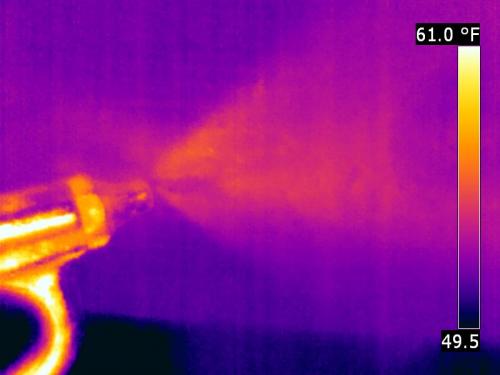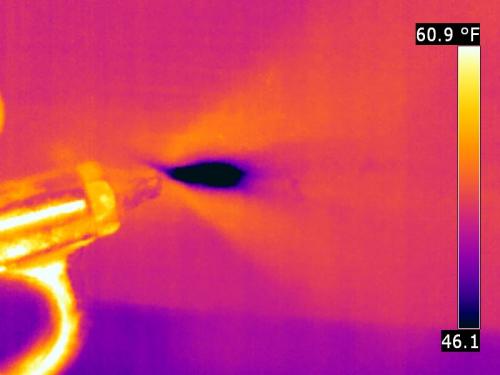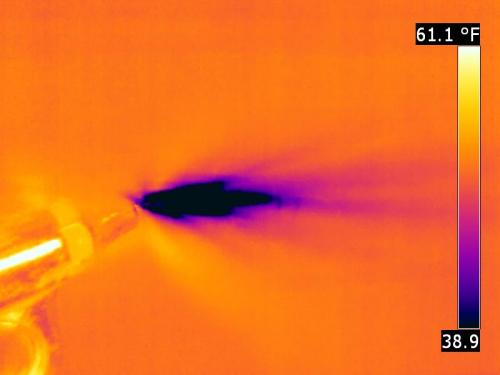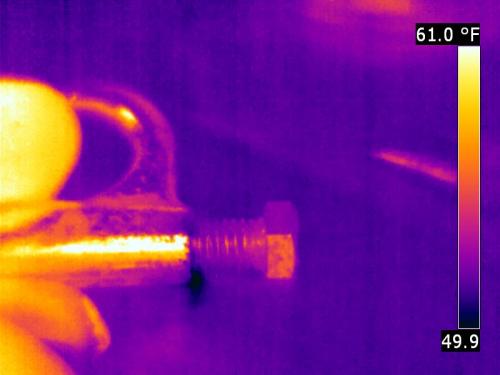The greatest concern with any thermal imaging application is achieving a significant temperature differential.
In this case I assume we are considering locating standard air leakage in a standard air environment. In the case of petroleum leaks with the gas finder, there is a different medium being discharged into the air. These are basically refrigerants in an atomized state and create a significant temperature difference as pressure changes.
In the application of air leakage into air, we need to look more closely at the pressure differential and the water vapor differential (which acts as the refrigerant in this case).
Almost all compressed air applications will have a lower concentration of water vapor due to compression as well as the probable air dryer components installed in the system.
The next concern is distance. It is probably more advantageous to have a telephoto lens than a super high-resolution camera. Both would be nice if you can afford it.
As we know, we cannot detect air temperature directly. We must measure the effects of the air temperature on surrounding components (including the atmosphere).
Last, we must consider the emissivity of the object that is leaking.
The higher the emissivity, the greater absorption and emittance that will occur.
As an air to air exchange under pressure will have very low temperature differentials to start with, highly emissive pipe will greatly reduce what can be seen by as much as 80% or more.
If thread sealants are present at fittings or if the pipe is coated with a highly emissive paint, this will improve visibility of the leak.
I conducted a test with compressed air (no air dryer installed).
The air temperature was 59°F with 100% relative humidity. Air pressure discharge at verbal pressures not to exceed 100 PSI.
First I attempted to discharge air through a small nozzle into the saturated ambient air. A very slight amount of temperature drop was noted beyond the nozzle. This was only visible at a distance of 8 inches from the camera.
Next, I discharged air against a wood framing component) high emissivity).
Low air discharge increased temperature at the wood due to the heat of compression from the compressed air.
As air pressure discharge increased, a drop in air temperature due to expanding gases began to show a low-temperature thermal anomaly.
Air patterns increased as pressure increased to 100 PSI.
Next, air was discharged to a cast steel casing. No increase in temperature was noted from the heat of compression (likely associated with low emissivity of the steel cast).
Increased air pressure discharge causing air temperature drop which was identifiable on the cast plate.
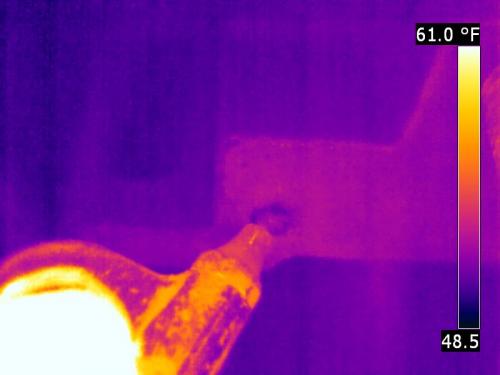
Low-pressure discharge.
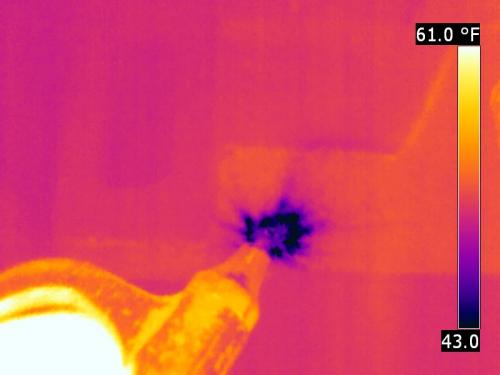
Next, is simulated air leakage through a threaded fitting. Under significant air leakage, a low-temperature thermal anomaly was noted at the leakage point. Temperature variances were not noted in the low emissivity metal nozzle.
I conclude that attempting to locate air leakage into ambient air will not be effective unless the ambient air or the compressed air composition can be changed or if the air leak is occurring in close proximity to a highly emissive substance.
